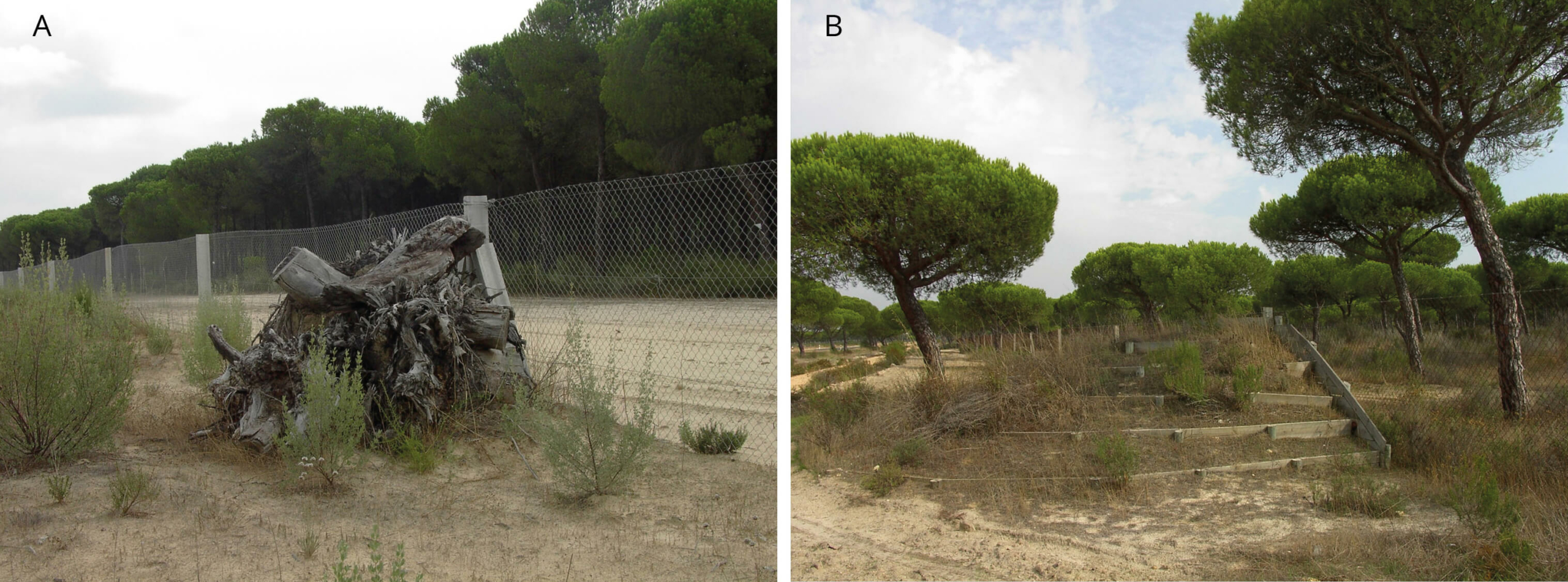Even with the best fences, infrastructure is never completely sealed off to wildlife. Occasionally, animals may access carriageways at road interchanges, gates, sections damaged due to e.g. landslides, fallen trees, maintenance machinery or even vandalism. It is thus advisable to install escape facilities where required to permit the animals exit on sections where access is more likely.
Escape facilities are one-way devices that allow wildlife to exit the infrastructure while preventing their re-entry. Their frequency and positioning must be adapted to the features of the area and the configuration of the fence. Two important considerations are:
- Adequate maintenance must be guaranteed because these devices may fail and become entrances for animals. Mechanical devices have particularly high maintenance requirements.
- Even if installation of these devices is a usual practice in some regions or countries, there is a lack of evidence about their effectiveness and more research is required. Therefore, escape devices should only be used in places where they are thought to be absolutely necessary and a monitoring programme must be planned.
Different types of escape systems may be used according to particular species. Main types are:
- Escape ramps: earth or other material ramps.
- Jump-out devices combined with ramps on embankments.
- Mechanical escape devices: gates or other types of device that are activated by the animal.
Escape ramps on the infrastructure side of the fence which form a gently sloping mound up to almost the top of the fence (Figure 5.2.21). Animals trapped in the infrastructure tend to follow fences and can climb these mounds and jump down to the other side, from where they cannot get back in. The design and positioning of the device must not pose any risk in the event of a traffic accident. This type of escape device is particularly intended for large ungulates, but the same principle is used for carnivores and even small vertebrates (Figure 5.2.23 and Figure 5.2.24). There is a lack of knowledge about the height that different European target species can jump with no risk of injuries. Fences must be well connected to the sides of the jumping ramp or be continuous without any gap allowing animal access (Figure 5.2.21 and Figure 5.2.23).
Jump-outs, which are combined with ramps on embankments, are another type of escape device which is particularly recommended for deer (Figure 5.2.22). The animals walk along the fence until they find these devices that allow them to jump out of the fenced area. Usually they are placed at the base of embankments. The same concerns mentioned for escape ramps apply here.
One-way gates open only in one direction to the outside of the infrastructure and close automatically after the animal passes through, either by weight or a tensioned closing mechanism (Figure 5.2.25). The size depends on the target species and a wide variety of designs exist. While their effectiveness is not clearly demonstrated, these systems are often installed for medium-sized or large animals such as badgers, fox, wild boar or deer, but also for ungulates (Figure 5.2.25B). Monitoring and evaluation of their effectiveness should be provided. A particularly careful maintenance schedule is required for these devices as they can eventually seize up, get stuck open and are at risk of doing the opposite of what was intended by creating an easy entry point for wildlife to the fenced area. This exit device also requires a hard base to prevent animals digging under it and stop vegetation growing that blocks its proper operation.
The effectiveness of the escape facilities depends on regular maintenance (see Chapter 7 – Maintenance). This includes cleaning and repairing natural damage such as a fallen tree or earth movement, wildlife attempts to create access points, such as digging under the fence and also unintentional damage like a traffic accident or impacts from maintenance equipment. Access to maintain the fence system must be provided. Vegetation maintenance is important in order to prevent branches from weighing down the top of the fence. It may be necessary to maintain a strip free from trees and bushes along the fence with a clearance of about 1 m to 1.50 m. Depending on the situation, this should take place on at least one side of the fence.




